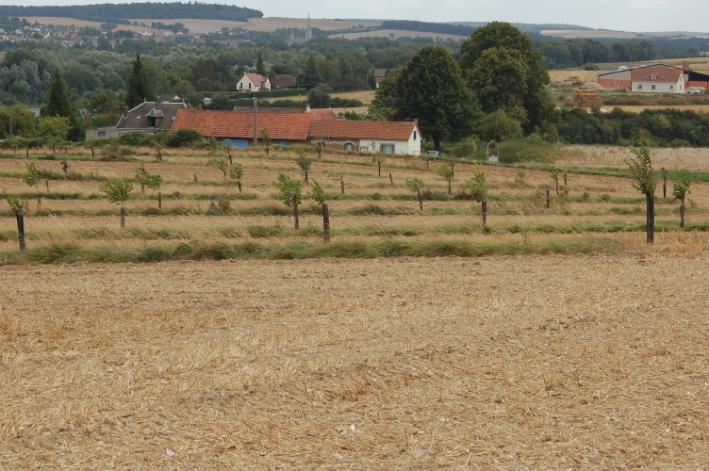
Agroforestry for Arable Farmers in Northern France
Description of system
Since 2006, seven experimental silvoarable projects have started in Picardy in Northern France. In total 100 ha has been planted. The plot sizes varies between 5 ha and 30 ha. The sites are mainly located on loamy soils and the tree density ranges from 28 trees per hectare to 110 trees per hectare. Each plot has a wide range of tree species. The distance between the tree rows is typically 30 m, but ranges from 26 m to 50 m.
Initial stakeholder meeting
At a meeting with 15 stakeholders on 15 September 2014 (of whom three were farmers), the most positive aspects of agroforestry was perceived to be the benefits for biodiversity and habitats, and a range of environmental issues. The stakeholders were generally convinced of the agro-ecological role of agroforestry. The most pressing negative issues were seen to be the complexity of work and issues related to mechanisation. Key potential areas for ongoing research included the benefits of “technical and economicreferenceagroforestryfarms”, simplification of the grant system, understanding the impact on crop yields, and solutions to management issues such as reducing labour andmechanization costs and the management of the grass strips.
If you would like to know about the activity of this group, please contact : Régis Wartelle r.wartelle@picardie.chambagri.fr
Download the initial stakeholder report
An initial report was provided in December 2014.
Download the initial research and development protocol
A research and development protocol was produced in August 2015.
Download the system description
A progress report on the research including a system description was produced in March 2016.
Lessons learnt
Régis Wartelle and colleagues describe the weed distribution across the arable alleys of six field silvoarable systems in Picardie. In three of the four conventionally managed systems the presence of weed species was greater near the tree rows than in the centre of the arable alley. The levels of weeds in the two organic systems was higher than in the conventional system and the distribution of the weeds was relatively uniform across the alleys.